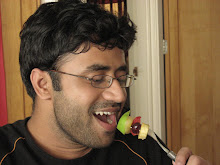Marriage – an institution in
which success is said to have achieved by the longevity of your stay. Where you
don’t get evaluated but can still fail if you don’t do well. It a beautiful
thing if you enjoy it but, will give nightmare if you try to adjust. The
subject has pulled attentions of thinkers and philosophers alike. However,
before one gets admission to this institution, comes a complex process -the process
of soulmate search. The post is a brief attempt to narrate how in India, there
is a change in dynamism in the way marriages happens in middle class society.
This change is neither new nor old. It came in 70s and still new in
different pockets of society in its own way while normal in others. In depends
on caste, location, attitude and several other societal factors. For example,
in metro its acceptance would have come much before than a tier 2 or 3 city
while a forward looking family in small town will accept it much easily than a
hardcore traditional family in metros.
In old days, there
used to be grandparents who were retired from job and did not have anything
else to do. So once their grand kid were about age, elders used to become
matchmaker. They thought it to be their important responsibility. For
some the zeal went beyond responsibility and became an obligation
toward their community. India being a caste driven society, these marriages
were arranged in caste and in the known families through mutual ties. Those
were the days when two strangers get married first and then fell in love. It
was days when romance used to flourish after marriage. When hide and seek was
played behind elders at home – In kitchen and drawing room, from corners of
eyes to fake coughing. It was cute and subtle. However, it was also cruel if
the boy and his family is just not the right kind for girl. There was no
hearing for girls and they used to accept the situation as fate. It was also
the time when leeches such as caste and dowry were so deeply rooted in most
part of the country.
Then came Bolywood movies, which
showed that love can be daring. The struggle seemed an integral part which made
love a sacred act. The entire gamut of love was so glamorous and fascinating
that youth started to make this as one important agenda in their life. Gaadi,
Bangla, naukri and chokri – a self choosen one. The last being the latest
addition gave backfoot to elders in family. However, Indian family were still
inclined towards arranged marriage by and large. But the acceptance towards love
marriage started increasing gradually. The new wave brought few good change.
Caste and money were not importance in this new wave. Likeliness for each other
took a front seat. Now love was seen in parks, garden,roadside,theatre and
slowly getting accepted. Somewhere, even parents agreed to it mostly maturely
but partly to few weird reasons. One of them being – not feeling responsible of
their kids fate ahead. But majority of Indian weddings still happened through
arranged or to say more appropriately - introduced set-up. Some through common
relatives, some through matrimonial sites.
Strangely, after all the
effect of western culture and youth’s mad rush to follow what is easy in life
marriages in India still last longest in the world. That’s because, be it love
or introduced marriage, the average Indian family believes deeply in
institution of marriages.
